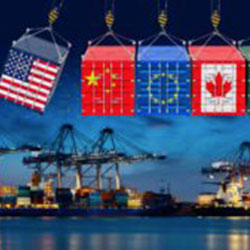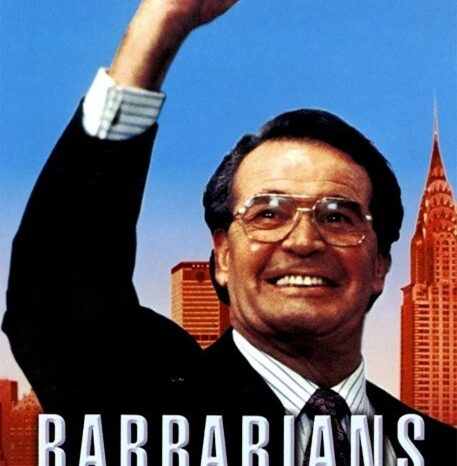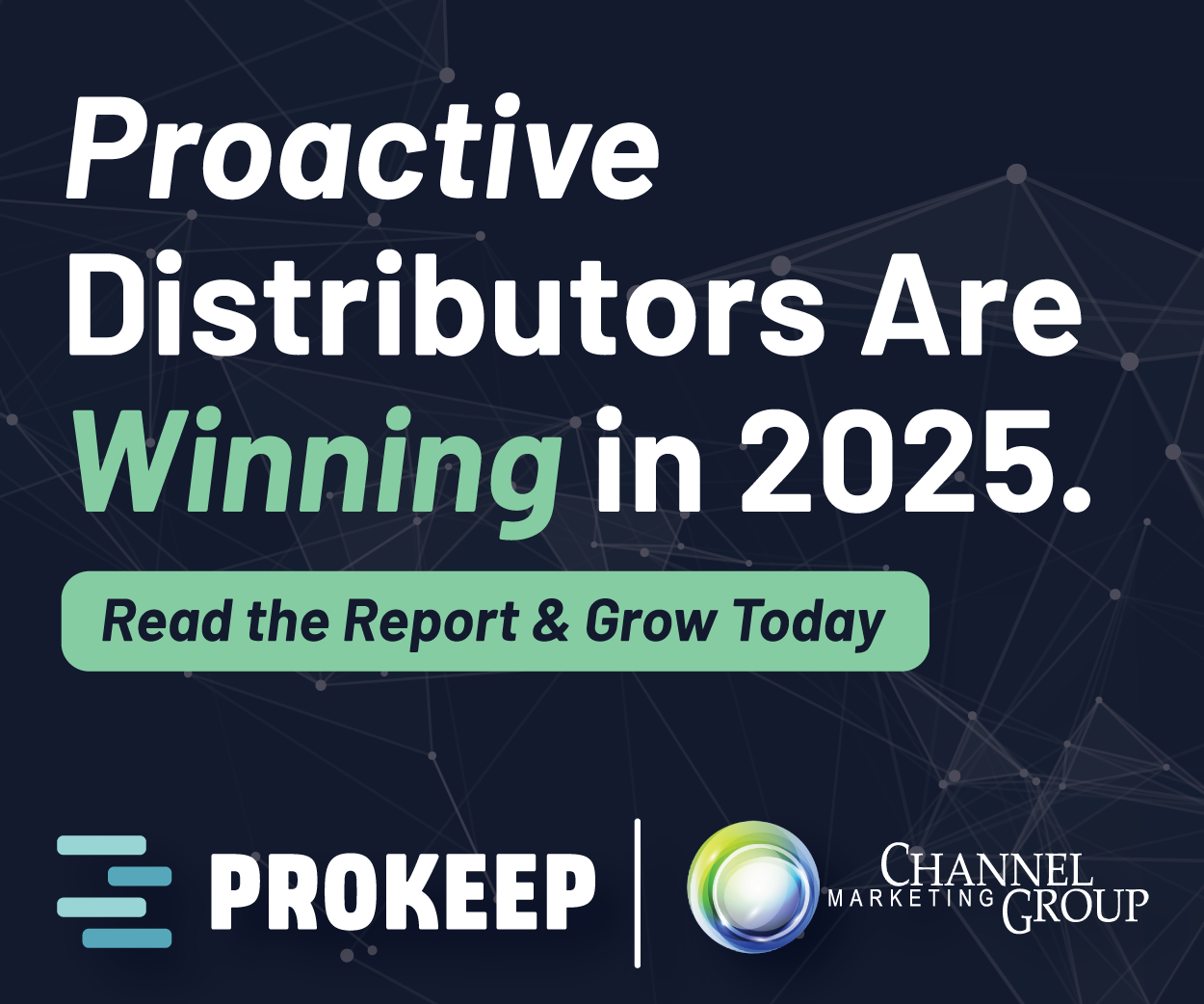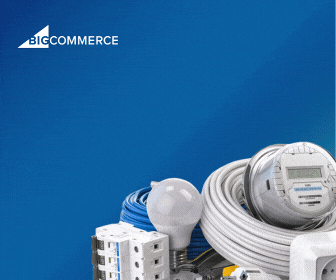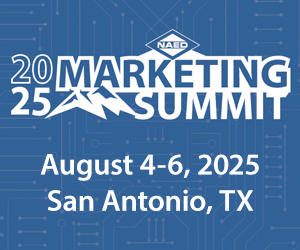Tariffs 2.0 – Relearning the Process
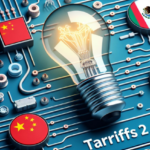 Upon arrival in Orlando to attend the NEMRA Annual Conference the news broke that the US would be implementing tariffs against Canada, China, and Mexico. As the day went on, the tariff talk changed and by the next day, tariffs were still expanded, and increased, on China with Canada and Mexico delayed.
Upon arrival in Orlando to attend the NEMRA Annual Conference the news broke that the US would be implementing tariffs against Canada, China, and Mexico. As the day went on, the tariff talk changed and by the next day, tariffs were still expanded, and increased, on China with Canada and Mexico delayed.
Tariffs have since been levied on aluminum and steel, threatened against Colombia, and brought up in discussion relative to the European Union.
What will be, who knows, but we do know that tariffs will be a part of the business landscape for at least the next four years.
This was inevitable given that President Trump, during his first term, levied tariffs on China that are still in effect, and campaigned that he would be expanding and increasing tariffs.
So, to hear at NEMRA that many, if not most, manufacturers were caught unaware / unprepared, was surprising.
Some asked “should I do it through pricing or surcharge?” (the answer is pricing). Some asked, should I do my price increase now and then do the tariff increase separately (so, two price increases, two changes for distributors!)
When I ask if they provide their distributors Country of Origin, some didn’t know, some said “we change based upon when we purchase due to cost and availability.”
During the conference (which I’ll overview in a separate post later in the week), John Gunderson and I developed some recommendations. He shared some of the ideas on our sister blog, HVACRTrends.
While the percentage isn’t too important, given that it may change by country (already has) and could change by product category (it will, as eventually some waivers will be allowed as was the case the first time around), here are some thoughts:
- Country of Origin is a critical product data point as this will drive tariff changes. Manufacturers need to populate this. According to one distributor, 35% of their SKUs did not have COO. In 2018 there were 198,000 SKUs in the IDEA Connector with a COO of China. How many are their today?
- This should be a key initiative of IDEA and NAED … contact manufacturers to advise of the importance.
- If the national chains and AD, supported by NAED and IDEA, coordinated this message, perhaps suppliers would respond? AD represents “the independent channel.” NAED could be a neutral facilitator, especially with Wes being a former distributor and understanding the margin and process implications, this could add value to all.
- Further, if IDEA is to be a product data / list price information disseminator, which is partially owned by NAED, NAED should compare its membership list vs IDEA’s manufacturer customer list, determine the gaps and perhaps use some of its recently generated digital funds to help get these manufacturers involved (as a number of small to medium ones are not due to cost.)
- This should be a key initiative of IDEA and NAED … contact manufacturers to advise of the importance.
- Timeliness – Manufacturers should share pricing updates in an electronic format to help make it easier for distributors to ingest the change. Last time distributors lost gross margin due to delays in getting pricing increases into their systems. It could take 2-6 months due to the number of manufacturers and changes necessary! Systems should be better. Manufacturers – help your distributors be profitable by doing this electronically. Perhaps consider force-ranking your distributors and ensuring direct connections for pricing information with your “top” distributors?
- T&C’s – distributors – make sure your terms and conditions, especially for SPAs and contracts, have you covered. Do they allow for price increases due to government policy? Could this be considered force majeure? Do quotes have an expiration date?
- Quotes – are outstanding quotes covered? What about backorders? While a number of manufacturers have issued press releases stating “no increase until end of March” this is typically because they already have enough inventory in their warehouse to ship material. In reality, especially if they are importing from China, price increases are coming.
- Price vs Surcharge – few, if any, distributor ERP systems can handle surcharges on a line-item basis. Distributors much prefer price increases (and we shared more on this back in 2018!) The more things change, the more they remain the same.) Further, a gross margin added to a price increase generates higher GP $ for the distributor, which can lead to higher net profit. Of potential concern is that distributors will increase sales but not sell more (units). There are also second-degree implications such as the potential for higher sales commission payouts and higher rebates earned if the rebate is based upon “total purchasing dollars.” Will rebate structures eventually get revised?
In the words of one manufacturer, I spoke with in December of the tariff issue, “time to dust off the playbook from 6 years ago and update it.”
Oh, and did you know that the last time that tariffs were implemented, six months later the industry began a sales decline? Over the next 18 months, according to DISC, the industry declined 7-8%. A coincidence? Also, during that time period, the price of copper declined according to John Gross (it is currently increasing, so different dynamics may be at play, or it may be too early, or it could be the influence of EVs and data centers.)
According to NEMA, US imports of electrical equipment from China has declined from about 30% in 2018 to about 19% last year. This doesn’t mean that there is less reliance on Chinese-owned companies as many of these companies moved manufacturing, or assembly, operations to other Asian countries (Vietnam, Thailand, etc.) as well as Mexico. This means that the current expand tariff on China, while covering more products, will have less of an impact than it could have.
There are also opportunities for distributors to be proactive, if they are not getting good information from some manufacturers.
Some other thoughts that John included in the article on HVACRTrends that also apply to distributors:
- “How you are together going to handle any Special Pricing Agreement (SPA) updates at the customer level. This is a big task. Use a Pareto process and start with the largest customer potentially effected on a SPA change and work down the list. If it happens, go fast and bring the resources you need to the project to get covered on 80% of the business impact as fast as possible.
- How does a tariff impact affect your backside rebate income? A rather big topic as manufacturers unit volume may stay flat, but the purchases made by distributors may grow in sell price by double digits. Again, talk with your channel partners early and often, as surprises and changes here that are not communicated properly can destroy partnerships.
- Commission to your sales teams … Do you consider a “cap” vs compensating them on tariff-inflated revenue?
- What should you buy and store? With Tariffs come risks upside and downside to a buy and store approach and how much risk do you want as an organization? If you are willing to make a bet, make sure you do it with proper data.
- If tariff action puts you in an Average Cost position where you have the advantage against the competition how do you get paid more for that advantage without being perceived as taking advantage of that with your customers?”
Domestic manufacturers, and those who manufacturer in non-tariff countries, also have pricing decisions to make … “do I increase my prices and improve my margins, or do I maintain pricing, market, and perhaps take share?” Will manufacturers who import tariffed products absorb some / all of the tariff to maintain competitiveness and their share.
In the immortal words of Dan Reeves, “Tariffs, did someone say tariffs!?”






